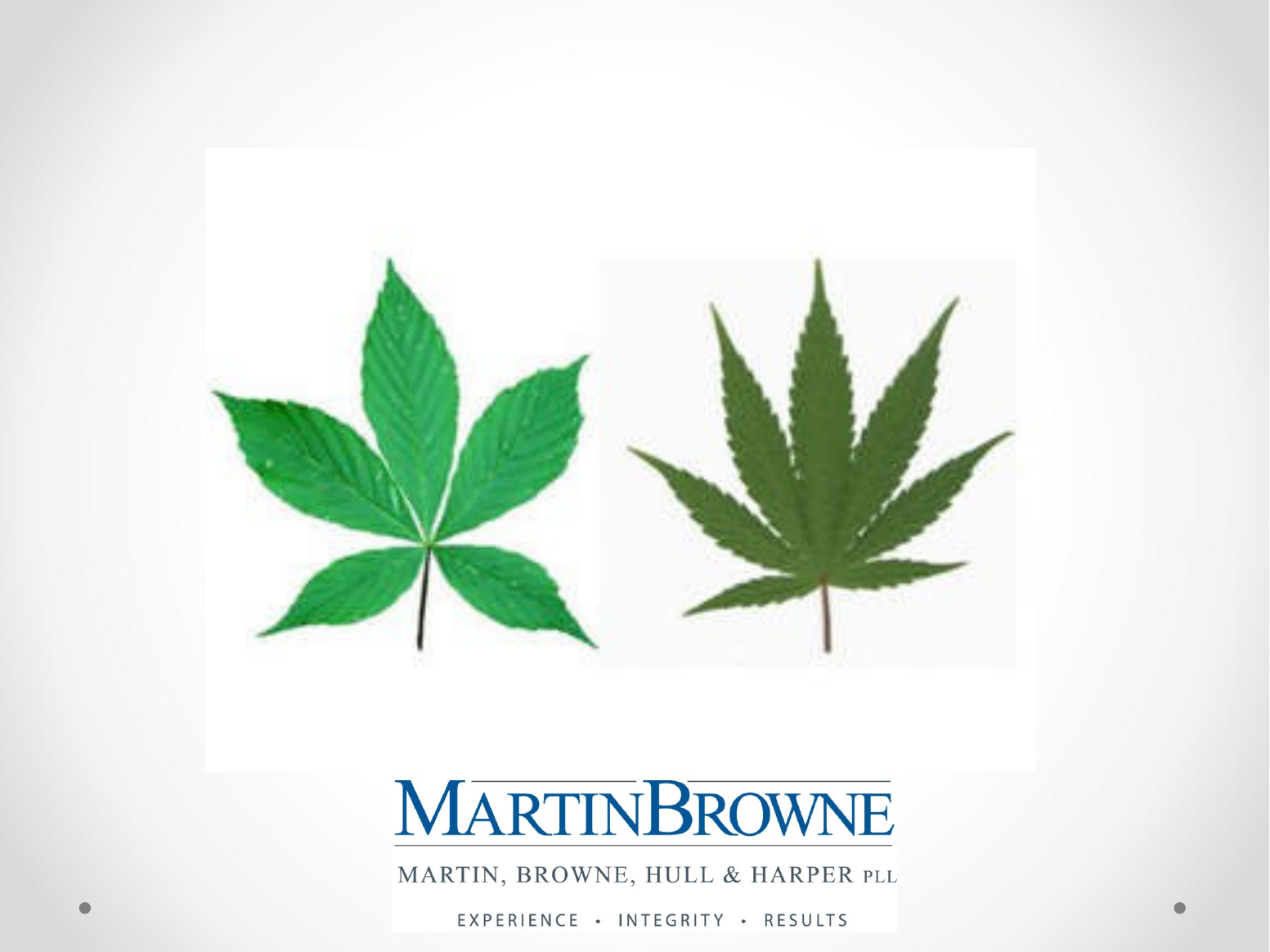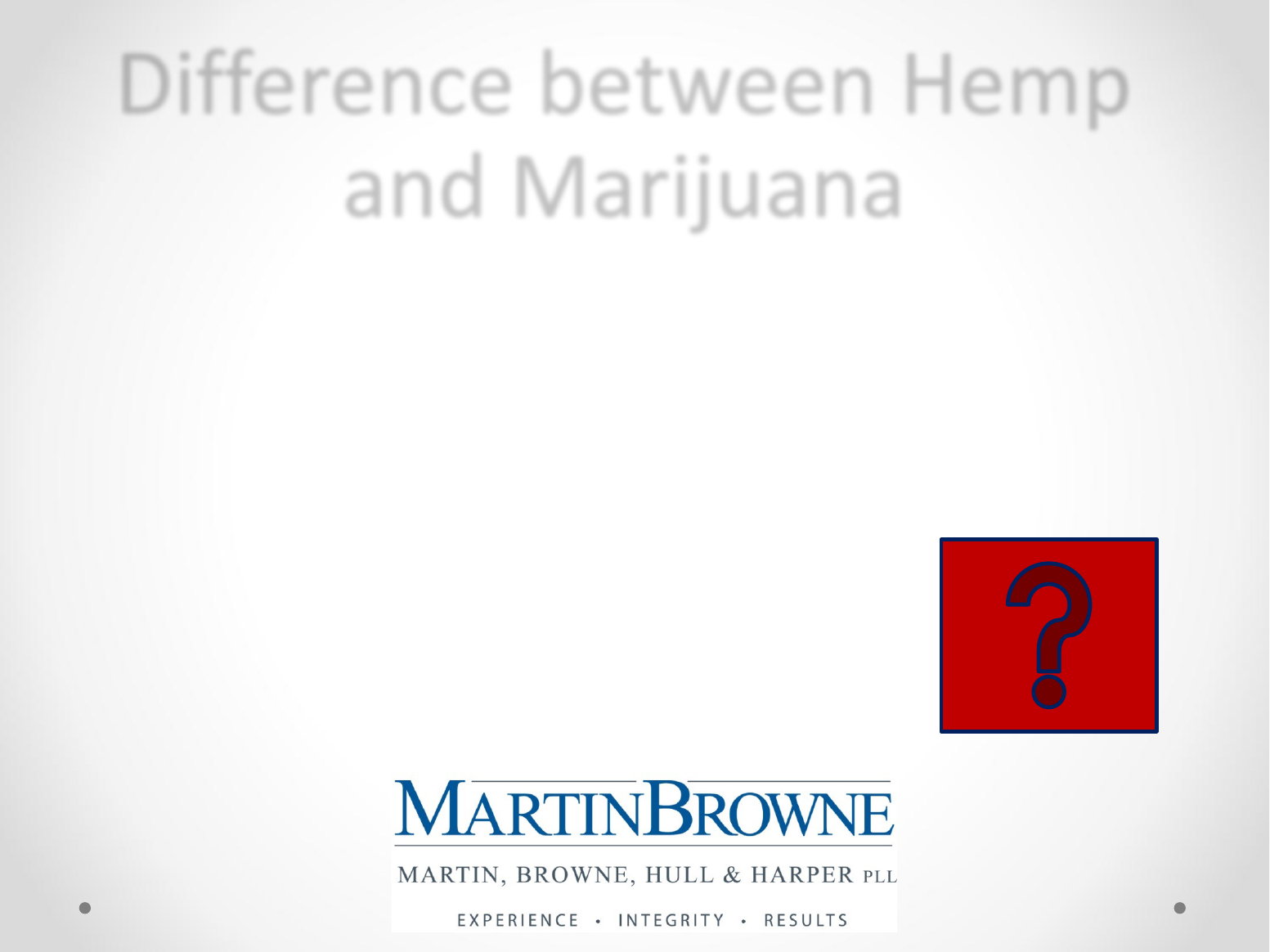
O-HIGH-O:
Ohio’s Medical Marijuana
Statute & Its Legal Impact
Presented to Chamber of Greater Springfield by:
Randall M. Comer, Esq.
500 N. Fountain Avenue
Springfield, OH 45504
(937) 324-5541
rcomer@martinbrowne.com
©2020

©2020

Marijuana leaf or buckeye leaf?
©2020

Medical Marijuana: History and Law
• 2015 – Issue 3
• Legislation signed in June 2016
o Ohio now has licensed cultivators, testing labs, processors
and dispensaries.
o Must have a card issued by a doctor registered with Ohio to
buy from a licensed dispensary.
o Ohio not alone – 38 states have legalized medical marijuana;
15 have legalized recreational
©2020

Statutes and regulations
governing medical marijuana
• O.R.C. 3796 – Medical Marijuana Control Program
• OAC 3796.1-1 Program Definitions
• OAC 3796.2 Cultivators
• OAC 3796.3 Processors
• OAC 3796.4 Testing Laboratories
• OAC 3796.5 Administration and enforcement
©2020

Statutes and regulations
governing medical marijuana
• OAC 3796.6 Dispensaries
• OAC 3796.7 Patients and Caregivers
• OAC 3796.8 Forms and Methods of Administration
• OAC 4731.32 Physicians
©2020

How to become a medical
marijuana user
• 1. Patients must have a qualifying medical condition.
• 2. Patients must have a medical marijuana card, issued by a
doctor registered with Ohio specifically for prescription
medical marijuana. (There are 3 in Clark County.)
• 3. Patients must buy the medical marijuana from a licensed
dispensary. (There are 2 in Springfield.)
©2020

Medical Marijuana
HIV/AIDS
Alzheimer's disease
ALS (Amyotrophic lateral sclerosis)
Cachexia – new 2019
Cancer
CTE (chronic traumatic encephalopathy)
Crohn's disease
Epilepsy or another
seizure disorder
Fibromyalgia
Glaucoma
Hepatitis C
IBD (inflammatory bowel disease)
MS (multiple sclerosis)
Pain – chronic/severe
or intractable
Parkinson's disease
Positive Status for HIV
PTSD (post traumatic stress disorder)
Sickle cell anemia
Spinal cord disease or
injury
Tourette's syndrome
Traumatic brain injury
Ulcerative colitis
Per ORC 3796.01, Patients qualify if they have these conditions:
©2020

Medical Marijuana
• New conditions can be added by petitioning
state medical board.
• In 2019, the Board rejected the following
conditions:
o Anxiety (Met requirements of new scientific info per OAC 4731-32-05)
o Autism (Met requirements of new scientific info per OAC 4731-32-05)
o Depression (Did not contain supporting doc. needed per rule)
o Insomnia (Did not contain supporting doc. needed per rule)
o Opioid addiction (Did not contain supporting doc. needed per rule)
©2020

Medical Marijuana
• The State Medical Board of Ohio established an annual
process where members of the public may petition the Board
to add new qualifying medical conditions. The next petition
period is scheduled to open on November 1, 2020 and close
on December 31, 2020.
• In 2019, The Board received 27 submissions for new
conditions
o Cachexia only was added as a qualifying condition.
o Other conditions previously recognized were expanded.
©2020

Medical Marijuana
• (CNN)Browns and Bengals fans don't fear -- help may soon be
here. But it's not the franchise savior you've been dreaming
of.
• The State Medical Board of Ohio is officially considering a
petition that asks Cleveland Browns or Cincinnati Bengals
fandom be considered a qualifying condition to legally obtain
medical marijuana.
©2020

Medical Marijuana
• Law prohibits smoking marijuana or growing it
at home.
o Can receive orally via oil, tincture, capsule, or edible;
o Can receive via vaporizing;
o Can receive via transdermal patches, lotions, creams or
ointments.
©2020

Medical Marijuana
• 6/1/19 – 35,162 registered patients in Ohio
• 12/31/19 – 78,376 registered patients in Ohio
• 10/31/20 – 147,678 registered patients in Ohio
That’s approx. 7,000 new
medical marijuana patients every
month.
©2020

Cost of Medical Marijuana
Terrasana Labs (Springfield) prices:
• Flower - $32 - $42 each (2.83 g.)
• Tincture - $36 (110 mg)
• Edibles - $15 - $49 (assorted)
• Vape (.5G) - $45 - $60
• Gear $3 - $189
• Extract $40 - $80
Ohio has not fixed any prices. They vary from dispensary to
dispensary.
©2020

Impact on Ohio Workplaces
O.R.C. 3796.28 Rights of Employer
o Employers should review and update Drug Free and Zero Tolerance
Policies (Employers have wide latitude; Decide your company culture)
o If employers don’t have one, it is recommended that one be drafted.
o Medical Marijuana users are not entitled to Unemployment Benefits
(“Just cause” under statute)
o Legal for employers to fire for possession or distribution of marijuana.
o Legal for employers to fire for use (medicinal use included) provided use
violates employer’s Drug Free or Zero Tolerance Policies
©2020

Impact on Ohio Workplaces
o No change to Workers’ Comp Defenses
• Positive alcohol and drug tests may be a defense to a BWC claim, but
it is a long shot. MUST HAVE REASONABLE SUSPICION.
• An employer may challenge a BWC claim where the employee tests
positive for medical marijuana, but even a longer shot.
• Voluntary abandonment will not prohibit a terminated employee
from receiving TTD if:
o Employee not impaired at time of injury; or
o Post-injury drug test shows marijuana usage sometime in the past.
©2019

Impact on Ohio Workplaces
o Employer’s obligation to accommodate is murky.
• Ohio law specifically states that “nothing in this chapter requires an
employer to permit or accommodate an employee’s use, possession,
or distribution of medical marijuana.” The words “this chapter”
causes concern that employees might be able to pursue claims
against employers under other chapters like Ohio’s disability chapter
(R.C. 4112);
• Ohio has not heard such a case yet.
©2020

Impact on Ohio Workplaces
• Virtually all state courts that have heard this issue have held
that employers are not obligated to accommodate. This is
predominantly because marijuana is still a Schedule I illegal
substance under federal law.
• A Massachusetts court recently held that employers must
determine if the requested accommodation is reasonable.
• At present, Ohio courts are likely to follow the majority of cases
that say employer is not obligated to accommodate.
©2020

Impact on Ohio Workplaces
• Take-aways:
1. Determine your culture – How will you treat medical marijuana?
2. Update your policies to reflect culture/expectations.
3. Train your employees, supervisors, managers to spot impairment.
4. Update post-accident packet to include reasonable suspicion checklist.
5. If an accommodation is requested, engage in the interactive process.
©2019

“The times they are a changin…”
Bob Dylan
• 12/4/2020 – The U.S. House voted 228 to 164 to legalize
marijuana (5 R’s in favor; 6 D’s against).
• Marijuana Investment, Opportunity and Expungement Act
(MORE) will de-schedule marijuana and expunge records of
those convicted of marijuana offenses. The future of the bill
is uncertain.
• Oregon passed Measure 110 in November election legalizing
possession and personal use of all drugs (manufacture and
sale illegal)
©2019

Impact on Criminal Law
• At present, Federal law makes no distinction between medical
marijuana and recreational marijuana.
o Marijuana is a schedule I controlled substance under federal law.
21 U.S.C. §812(c).
o Federal banking laws require banks to report criminal activity to
federal authorities.
o Federal laws also prohibit gun purchase or possession of firearms by
illegal drug users, including medical marijuana.
©2020

Impact on Criminal Law
• Ohio law does distinguish between medical marijuana and
recreational marijuana.
o Recreational marijuana in Ohio is a schedule I controlled substance.
o Medical marijuana is a schedule II controlled substance only for
purposes of O.R.C. Chapter 3796. See, O.R.C. §3796.01(B).
©2020

Impact on Criminal Law
• No one may operate a motor vehicle while under the
influence of marijuana – medical or recreational. See, O.R.C.
§3796.22
o There is no breathalyzer for marijuana.
o Only blood or urine tests will show marijuana usage and the presence
of THC.
o A person can be charged with OVI if they have 2 ng/ml of THC in blood
or 10 ng/ml of THC in urine, or 50 ng/ml of THC metabolite in blood
or 35 ng/ml of THC metabolite in urine.
©2020

Impact on tax law
1. Medical marijuana businesses are effectively taxed at a
higher rate.
2. 26 U.S.C. §280E prevents deductions of most ordinary and
necessary business expenses for those businesses that
“traffic” in Schedule I and II controlled substances.
3. Businesses have tried to set up separate management
companies to handle ordinary and necessary business
expenses, so that deductions can be taken. However, a
recent tax court decision does not permit it. Alternative
Health Care Advocates v. Comm’r, 151 T.C. 225 (Dec. 20,
2018)
©2020

Impact on tax law
How’s business in Ohio’s medical marijuana industry?
o Sales were expected to be between $200 and $400 million annually.
o 2020 sales through August approximate $120 million
o July 2020 set a sales record of $21.4 million
o Ohio sales lag compared to other states perhaps due to price –
average price per gram at an Ohio dispensary is $18.47, whereas
Michigan’s is $9.38, and on the street it is $8.42.
©2020

Michigan
• Medical marijuana has been legal since November 2008;
• Recreational marijuana has been legal since November 2018,
with legal recreational sales commencing on Dec.1, 2019.
• Allows a private employer to maintain and enforce a zero-
tolerance drug and alcohol policy.
• Employers are not required to accommodate the medical use
of marijuana in any workplace.
©2020

West Virginia
• Medical marijuana use is legal.
• Employers cannot discriminate based on the fact that
someone has a medical marijuana card.
• Employers are not required to make accommodations for the
use of medical marijuana on employer property.
• Employers may still discipline an employee for working under
the influence.
©2020

Kentucky
• No legal use of marijuana is permitted.
©2020

Indiana
• No legal use is permitted.
©2020

Breathalyzers
• A University of Pittsburg team developed a breathalyzer to
measure THC as reported in an August 27, 2019 Science Daily
article.
• Hounds Labs, out of Oakland, CA, has created a marijuana
breathalyzer that was tested by some law enforcement
officers over Labor Day 2019.
©2020

©2020

CBD Products (Hemp)
• What is Hemp?
o Cannabis plant, grown for its many industrial uses;
o Does not produce the intoxicating effects of the cannabis plant,
marijuana;
o Yields a strong fiber, used in textiles; the seed has nutritional value
and can be eaten; and Cannabidiol, or CBD can be extracted from the
plant.
©2020

Difference between Hemp
and Marijuana
• Levels of THC
o While hemp and marijuana are both cannabis, hemp does not produce
the same intoxicating effect marijuana does.
o According to the USDA, hemp must contain less than .3% THC.
o Marijuana contains a higher level of THC, often over 10%.
©2020

Ohio Law on Hemp
• 2018 Farm Bill – Federal Expansion of Hemp Cultivation
• Senate Bill 57 (2019)
o Legalized hemp and hemp-derived cannabidiol oil;
o Decriminalizes hemp, making it a legal crop for Ohio farmers to
cultivate and process;
o It allows for the creation of a hemp program to be administered by the
Ohio Department of Agriculture;
o Sets up a licensing structure for farmers who are interested in growing
the crop and those interested in processing it.
©2020

Farmers and hemp
• Farmers will have to obtain a license to grow hemp.
• The goal is to have farmers licensed and able to plant the crop
by Spring of 2020.
©2020

Selling/Testing CBD
• It is now legal to sell properly inspected CBD products in Ohio.
• The Ohio Department of Agriculture will be testing all CBD
products for safety and accurate labeling to protect Ohio
consumers.
©2020

Does CBD affect drug tests?
• Drug screening detects the presence of THC not CBD;
• Hemp-based CBD products can contain traces of THC;
• CBD products often have more THC than claimed;
• Look for a manufacturer that can provide a Certificate of
Analysis, or COA for its product.
©2020

Questions?
©2019

